The Life of Riley – A Trip Through County Cavan (#502)
In this episode of the Letter from Ireland Podcast show, we take a trip around County Cavan - looking at the main families, sites and music along the way. Join us as we have the "Life of Riley" in County Cavan.
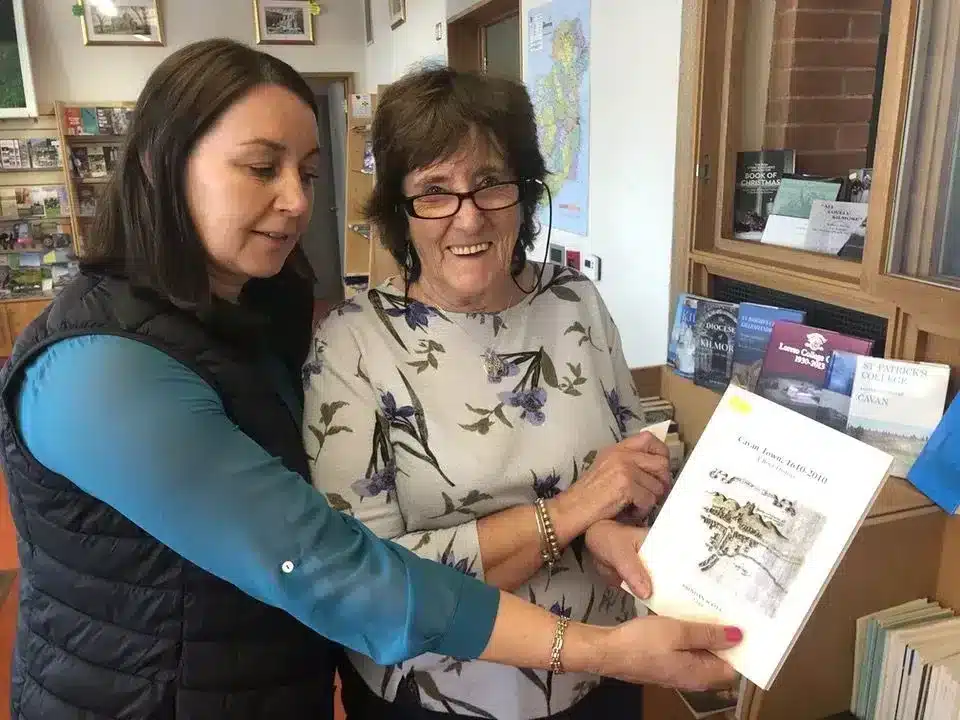
You can listen to the show on your computer/smartphone by clicking on the play button above (the triangle with the circle around it). You can also download the show onto your computer by clicking on the download symbol. Enjoy!
Episode Summary:
Welcome to Season 5, Episode 2 of the Letter from Ireland Show.
In this episode of the Letter from Ireland Show we head to County Cavan and meet plenty of characters, visit some beautiful places and pick up the stories of this little-visited part of Ireland. Join us as we have the “Life of Riley” in County Cavan!
The Letter from Ireland Show is a weekly podcast that goes out each Thursday from our cottage in County Cork. Tune in to this episode – and dive straight in to a bit of Irish caint, ceóil agus craic (conversation, music and craic!).
Transcript of Podcast
You can read along with the podcast above – using the text below:
Carina: Céad Míle Fáilte. Welcome to the Letter from Ireland Show where we travel in the footsteps of your Irish ancestors visiting their homelands and telling their stories as they put down roots in so many places around the world.
Carina: Hello and welcome back. Fáilte isteach. That means you’re all very welcome to the Letter from Ireland Show and we’re now on series five, episode two. Well it’s autumn here in Ireland and that is the very best time to be out and about in the countryside. We don’t need any excuse. So, Mike and I were headed off to visit a county we rarely get to spend time in. The county we were setting our sights on this time was County Cavan, up there close to Fermanagh, Monaghan, and Leitrim up North.
Carina: If you’d like to hear what we discovered and who we bumped into on our journey, why not join us now and listen along to what we got up to in this lovely County of Cavan where we’ve heard that there is a lake for every day of the year! Mike and I live down south in County Cork and, so, our journey to Cavan took us to the north to follow in the footsteps of our Irish ancestors.
Carina: Now those of you who are regular listeners to the Letter from Ireland Show, you’ll know that we go out and about in Ireland meeting those who love to share their knowledge of Ireland, past and present, exploring the landscape and, of course, we love to have you join us as we visit the places of your own Irish ancestors and give you a glimpse of what life was like for them.
Carina: To tell you the truth, Mike and I have been to Cavan before but we were only passing through. We always seem to be heading off to another county, so we were very excited to stay put this time and spend some time in County Cavan. If any of the items we mentioned in the show today catch your attention, you can see all the links in the show notes @ aletterfromireland.com/502, so all the links we mentioned are in those show notes @aletterfromireland.com/502. Don’t worry, though, I’m going to mention the link again at the end of the show for you.
Carina: Now, one man forever connected with County Cavan is Percy French. You may not know Percy, but his songs are going to strike a chord, I’m sure. You’ve all heard of the Mountains of Mourne, maybe Phil the Fluter’s Ball and, of course, the famous song called, Come Back Paddy Reilly to Ballyjamesduff. And, in that song, he mentions the Garden of Eden has vanished but it can be still found in Cavan if you turn left at the bridge of Finea, and then stop halfway to Cootehill.
Carina: Now, when we were listening to that song, Percy French has touched on three very important aspects of Cavan life at the turn of the late 19th and early 20th century, when he first composed the song. First up, he mentions the wonderful towns and villages in Cavan. Finea, Cootehill, Ballyjamesduff and more. Secondly, he soulfully calls the emigrant, Paddy Reilly, who leaves Cavan for Scotland to find work, to turn back and return home to Ireland. And thirdly, of course, he mentions Reilly. A surname that links back to the old chieftains of Cavan or East Breifne, as it was once known.
Carina: So, the song, Come Back Paddy Reilly to Ballyjamesduff, recounted the story of our ancestors in a very compelling way. And Mike and I decided to follow the footsteps of our ancestors, remembering the themes in the song because he touched on the beautiful counties, towns and villages, the emigration of the people for work, and the history of O’Reilly’s and Cavan. We had all this in mind as we travel through the County Cavan.
Carina: Our first stop, when we arrived there, was to see the town of Cootehill that Percy mentions in his song. The first thing I noticed was the very wide main street of this country town, and we parked at the top of the town to explore more. Here’s what we discovered when we arrived in Cootehill.
Carina: Welcome to Cootehill. Cootehill is in the east part of County Cavan and it’s a wonderful example of an 18th century Ulster linen market town. So, linen was really part of the history here. These lands around this area were previously owned by the O’Reilly clan, and then during the Cromwellian Wars, they were given to the Coote family and Charles Coote was very interested in developing the linen industry here in the 17th century.
Carina: I’m standing here on Market Street and I’m actually looking at his wonderful house which is here, still on the street, and very well preserved. This is a busy little town this morning. There’s lots of cars flying up and down the street and after walking around and taking a trip around the area, and we were going to fill you in on more on Cavan and County Cavan, and the wonderful areas around here as we go along today.
Carina: Cootehill was a great a place to start our exploration of County Cavan, and then we were off to see some more towns when a town with an interesting name of Virginia caught our eye. And, once again, there was the very wide main street with very well appointed houses on each side looking very much like the layout of Cootehill. It was busy in the town, but we found a quiet spot on the avenue of the church grounds, surrounded by enormous yew trees where Mike explains more of the history of these plantation towns here in East County Cavan, and why those yew trees were really important.
Mike: Oh, okay, folks. So, here we are in the town of Virginia in County Cavan. I think I said that right, County Cavan. And it’s a bit of an overcast day here, but what we’re doing is we’re going through a lot with the actual various towns, what you might call the plantation towns, in the east of County Cavan.
Mike: Now, let me explain it a little bit more because, back in the day, this would have been the area that would have been held by the O’Reilly clan in the Kingdom of Breifne and, in turn, around what the 1100’s, the de Lacy Norman Lords would have incurred on the area because it’s better land, basically. Over time, they became friends, inter-marrying and so on, with the actual O’Reilly’s and various families like the Fitzsimmons and so on moved in here. But then, I suppose, round about the mid to late 1500’s, we have the Plantation of Ulster.
Mike: So, at that point in time, you have areas like this coming under close scrutiny from England and essentially various undertakers, you know, those rich landlords in England, undertook to plant these particular areas with their own carpenters, their own blacksmiths and, eventually their own farmers and so on. So, Virginia is an example of that. And we have other ones where like Bailieborough. We’re going into Ballyjamesduff. We already came from … I’m trying to remember the names of the various places at this point. Yeah, Kingscourt. Thanks, Carina, behind the camera.
Mike: I suppose, the other thing to say, as well about these towns, they’re all laid out the similar sort of way because they were planned with the big wide street, just behind us here and, maybe, you can see it there in the distance, with merchant houses either side and room for a fair, of course, on a regular basis, in the middle of the town.
Mike: The other thing to say, as well, is this particular area boomed commercially because of the actual linen industry in the 1700’s so we have that point in time, up to about the time of mechanization in the early 1800’s where, essentially, if you looked around the fields around here, you would’ve seen the actual flax drying off and so on, as it made its way towards being linen.
Mike: You would have had quite a lot of rich merchants setting up in the area, and so on. So, it was a booming place and, I think, just to say, today, there’s still a little bit of the boom about it slowly coming back here after our Celtic Tiger and our crash of course in 2008. So, I guess the east of County Cavan, with its various family surnames like O’Reilly, of course, Fitzsimmons, Brady, McGowan, Smith, all those sorts of names like that.
Mike: But, also, there’s a lot of names came into the area, as well, from England and from Scotland back in the 1500’s, 1600’s into 1700’s. So, looking forward to exploring the town a little bit more. And in fact, as I’m actually looking up here, I’m reminded of the old Irish name for Virginia .Of course, the new name is named after Elizabeth the First, the Virgin Queen, but as we, actually, look up here, we see a whole avenue of yew trees and, I can’t remember the name in Irish, maybe Carina remembers there.
Carina: Achadh an Iúir
Mike: Achadh an Iúir, I think it is, yeah.
Carina: Achadh an Iúir
Mike: That’s it, yeah. So, essentially, we see a whole lot of yew trees working its way up to the old typical configuration. The old Church of Ireland church up there overlooking the town. The Catholic church built a little bit later and, ideally, a bit higher.
Carina: Do any of you listeners have an O’Reilly or maybe Fitzsimmons or Brady, McGowan, or Smith in your family tree? Or maybe some of your ancestors came from Cavan? If so, you must take time one day to visit this lovely county where you’ll see these surnames in abundance and meet welcoming and friendly people along the way. The Cavan people, we felt, couldn’t have made us feel more comfortable and we were really enjoying exploring this less well known county.
Carina: Well, Percy French, certainly, had it right when he said in his song that the Garden of Eden had vanished, but really was found in County Cavan and so we couldn’t come back to Cavan and visit Cavan without going to Ballyjamesduff. As luck would have it, in Ballyjamesduff, they have the Cavan County Museum and there’s a room there dedicated to Percy French, which I was delighted to see. The room gave me a real feel for Percy and Savina Donohoe, who’s curator of the museum, took time to chat with us and fill us in on the background of the famous song and the songwriter, and I got to see a picture of Paddy Reilly among all the memorabilia.
Savina Donohue: Hi Carina. My name is Savina Donahoe and I’m the curator here at the Cavan County Museum, which is located in Ballyjamesduff.
Carina: Well, we’re here to Ballyjamesduff because I would love to find out about Percy French and, I believe, you had a little exhibition here. This room we’re standing in is all about Percy.
Savina Donohue: It is all about Percy because, of course, you know the famous song Come Back Paddy Reilly to Ballyjamesduff. And a lot of visitors come to the museum here, Carina, and they’ll say, “Actually, there was no such person as Paddy Reilly.” But there was. Here he is here, actually. This is Paddy Reilly. This is one of the only photographs there is of Paddy Reilly. But just to tell you about Paddy Reilly and Percy French. Percy French, when he came to Cavan, he was an engineer. He used to go around the County inspecting the drains.
Carina: Inspector of the drains. That was his job, yeah.
Savina Donohue: And when he’d come to Ballyjamesduff, Paddy Reilly was a jarvey (drove a pony and trap). And Paddy used to bring him around in his pony and trap and they became friends. They became good friends. Used to chat and have the crack and the whole lot and, one time Percy French come back to Ballyjamesduff, Paddy Reilly was gone. He’d emigrated, actually, to Scotland and they-
Carina: A very common occurrence-
Savina Donohue: Yes, yes. And they say he actually went off to Oldcastle and left his pony and trap at the train station in Oldcastle. Got on the train. Went to Scotland.
Carina: Oh, that’s such a sad image, isn’t it? Yes.
Savina Donohue: And then Percy French, often in his life, you’ll see what his paintings, and with the plays he wrote, and the music he wrote, when something significant happened in his life, he tended to write something. So, that’s why he wrote Come Back Paddy Reilly to Ballyjamesduff. So, that’s the song.
Carina: Wonderful. Fantastic. And Paddy Reilly is buried here as well, I see, locally, is he?
Savina Donohue: Paddy Reilly is buried locally and Percy French is buried over in England. Percy French was from Roscommon but when he went over to England, at one stage, he became unwell and he’s actually, buried over there.
Carina: That’s really, really interesting. And the whole theme of emigration from this area, Cavan, can you tell us a little bit about that, Savina?
Savina Donohue: Cavan was, like many of the counties in Ireland, was very, very badly influenced or affected by emigration. And I know that it still is, but somehow it’s different when you hear the stories long ago because we don’t have the social media or the phones and everything that we have now. They had none of that.
Savina Donohue: So, emigration then, when I hear some of the stories, especially visitors who come through the museum with their grandparents or great-grandparents from Cavan, some of their stories are really sad, how they left.
Carina: So they left, yeah.
Savina Donohue: And probably many of them never came back.
Carina: And where did they go to, Savina?
Savina Donohue: A lot of them went to America. A lot went to America and over into England and now they would probably come back from England, but America probably was the most popular place. Some to Australia but, for us, mostly American visitors.
Carina: Well, thank you very much for showing us this room dedicated to Percy French in the museum. And I’m going to look forward to checking out all of the other areas because I know you have a lot going on here in the museum in Cavan.
Savina Donohue: There’s a lot going on, both indoors, and we have as many more exhibitions outdoors. So, there’s a great mix.
Carina: Excellent and, I believe, there’s a statue of Percy up the town, as well that we’re going to go and have a visit there too.
Savina Donohue: Yes, go and see that. Yes. So, as you can imagine, Ballyjamesduff, Percy French, huge connections. Thank you very much, Savina, for having us. Thank you.
Percy French’s : (song : Come back Paddy Reilly to Ballyjamesduff )
Carina: The feeling that stayed with me after speaking with Savina was the heartbreak suffered by the families left behind through the years of emigration. Just as in the song where a Percy alluded to the lonesome donkey and Paddy’s family all being left behind while Paddy himself headed to Scotland. Surely, this was a very familiar tale to many in Cavan and throughout rural Ireland. It’s no surprise that the town of Ballyjamesduff, made famous by Percy, honors Percy French with a prominent stone statue taking pride of place on the street.
Carina: Mike headed straight over there and got a photo of Percy relaxing on a bench, immortalized in stone. He was, indeed, a fine looking man with distinguished long whiskers, and a very kind face but it was time to say goodbye to Ballyjamesduff, and then onwards to Cavan Town, and to see if we could find where a Percy lived when he stayed in Cavan.
Carina: When we arrived in Cavan Town, you knew you were in the capital town of that county. It had an air of importance and bustle, and I headed across the town to the once grand area that Percy lived. I found myself walking along an avenue lined with impressive Georgian houses, maybe, that had seen better times. Today, it’s a busy thoroughfare and I finally found a little plaque on Percy’s home which is located just across the road from the library and cathedral.
Carina: I’m here in Farnham street in Cavan Town in County Cavan and I have the pleasure and delight of standing outside the house of Percy French. Now, Percy French, you know, wrote that wonderful song, Come back toPaddy Reilly to Ballyjamesduff, but he also had the job as an engineer and while he was in Cavan and working here in the town, he was an inspector of the drains here.
Carina: So, this is quite an official street actually that we’re on. There seems to be a lot of offices around here as well, so maybe he lived right in the thick of it, as they say. The house that we’re looking at where he lived is a really imposing cut stone terrace house. It’s a three story house with large windows looking out onto the street here and it looks really solid. Unfortunately, today, it’s a little sad looking, as it looks like it is deserted and we would love to get in there. And it’s number 16 and Percy lived here for seven years between 1881 and ’88. So, let’s discover some more about Cavan.
Carina: And to discover more about Cavan, we walked right across the road to Cavan Library and spoke with the resident genealogist there, who’s called Concepta McGovern. Now, this lady is a fount of knowledge and well worth making an appointment to see if you happen to be in Cavan Town. We were interested in the history of the O’Reilly clan, and she pointed us to our next port of call which took us outside the town, and way back in time as we headed into the lush countryside and up Shantemon Hill, to a very important place linked to the O’Reilly chieftains but it had links that went way back further into the midsts of time, too.
Mike: So, here we are heading up to the top of the Hill. Finn McCools Five Fingers. As you can see, it’s overgrown here at the moment, just outside the town of Cavan. You wouldn’t believe just a few short minutes ago we were battling our way through the traffic to get here. Not many people up here today or last few days but, of course, as we find out later, at some stage back over the last number of hundreds and thousands of years, this was the actual chief inauguration site for the O’Reilly’s, lords and the kings of East Breifne and also, I suppose, going back thousands of years before then, would have been the place where the local druid population, the local people, would have celebrated the Celtic seasons. So, it looks like we’re almost at the top now. I can see the sun just beginning to break through.
Carina: It’s not all plain sailing following in the footsteps of our ancestors and I have to tell you that when we got to the top of Shantemon Hill, we discovered we’d left part of our recording equipment way back in the car. So, Mike got to do that climb all over again. We really do get to visit special places off the beaten track on the Irish ancestry trails. And this struck us as one such place.
Carina: We had to get directions from the friendly neighbors who lived around the side of the hill and they told us to watch out for the paths that took us to the ceremonial site on top. I know without their directions we’d never have found it. I believe there are plans afoot to make the area more accessible to visitors, but for now don’t attempt the climb without some sturdy boots and a stick and long trousers. It’s tough there going on that path with all the undergrowth. But, as you’ll hear, it’s worth the effort to reach the top of Shantemon Hill. And when Percy mentioned Reilly in that famous song, he was reaching back through the centuries to this very spot. I’m not sure he even knew about it, where we stood on that day.
Mike: Well, we’re here at the top of Shantemon Hill, just outside the town of Cavan in County Cavan, and we’re at a place called Finn McCools Five Fingers. As you could see, maybe, as you look around you there, it’s because we’re right beside a set of standing stones here that probably date back, I would say, one and a half thousand years plus, and there’s five of them, hence the idea of Finn McCool, one of the actual heroes of Ireland, and the five fingers.
Mike: And, I suppose, the biggest significance for a lot of the folks watching this here today is that this particular place which, as I look around at the moment, it’s got a lot of higher trees, but you would have had a view across a lot of the actual lands in County Cavan from this spot, and it was the inauguration site for the O’Reilly kings and chieftains, lords, if y’all want to call them, of the beginning of the last millennium.
Mike: That’s right. The millennium before last, actually, around the 1100’s onwards when the O’Reilly’s were actually lords, kings of East Breifne, which today is known as County Cavan. So, they would come up here at a time when the actual lordship, the kingship was actually passing for one person to the next and essentially it was almost always the time that the Gaelic kings actually came to a point, the highest point of the land, so they could overlook their lands and usually at the site of special historical significance such as this.
Mike: So this would have been ancient, if you like, a over a thousand years ago, in the first place, and, at that point in time then, they would’ve gone through with the help of their local, I suppose, druidic or the equivalent, I suppose, advisers later on. With their particular help and through a set of rituals actually assumed the kingship or chieftainship.
Mike: So, it’s a lovely day here today. The sun’s just gone in for a few minutes. It’s late in summer, I suppose, late August at this point in time. There was nobody else up here. The path up is very overgrown but it’s just a lovely spot. Hear the birds in the background but you could just imagine the history and significance of this place and especially for the O’Reilly clan down through those centuries.
Carina: Percy French, mentioning the surname, Reilly, in that famous song, Come Back Paddy Reilly to Ballyjamesduff, connected back and linked to the heroes and legends of the past. And now, Mike and I wanted to see, and to know more of the O’Reilly’s and to further explore their history in Cavan. So we headed off to another amazingly beautiful part of the county, this time to a magical lake with a castle sitting on an island right in the center of the wonderful tranquil Lough Oughter.
Carina: Well, what a picturesque lake I’m standing beside here. It’s Lough Oughter. O-U-G-H-T-E-R but it’s pronounced ooter. So, Lough Oughter has this fantastic castle here in the background, in the middle of the lake.
Mike: Isn’t it lovely? Yeah.
Carina: And Mike, you know, the story behind this castle, that didn’t start out as the castle we see now. What was there previously?
Mike: No. Well, folks, if you’re not watching this in video, I could just describe it to you. It’s a large lake, Lough Oughter. I’d say this must be a few hundred acres in size, at least. And as this small, round island, which apparently, I think they actually lowered the levels of the water, in fact, so I might have been even standing even lower in the water, is this round island. I think, Carina, going back maybe to the 600’s or 700’s, it would have been what was called a Cranog which would been just a wooden building, essentially.
Carina: So, a wooden stick and mud building in the middle of the lake. They were generally in the middle of the lake for a special reason, weren’t they, Mike?
Mike: Well, for obvious reasons. It was, I suppose, just for security. And I guess what happened then was that it was probably used for different purposes by the local O’Reilly chieftains for a long, long time. But with the coming of the Normans around about the late 1100’s, they built one of their castles here, and this one you can see here actually, the remains of it, it’s a lovely round shape and there’s a big segment taken out over there but it’s actually a round castle.
Carina: Well, it looks like we can see right into the middle of it with the missing segment there.
Mike: Which is courtesy of Mr. Cromwell in the mid 1600’s, yeah. I mean, that would have been actually built in … It’s one of the earliest castles in Ireland, would have been built in the maybe 1200 thereabouts.
Carina: And the Norman family that built that castle?
Mike: Well, it would have been … The overlords would have been the de Lacy’s from what’s now County Meath. Might’ve been the Fitzsimmons, I’m not quite sure. It was probably just … well it’s certainly, under the de Lacy’s at the time.
Carina: The de Lacy’s.
Mike: But, of course, the local chieftains, being the O’Reilly’s at the time, they liked it so much, they decided to oust the Normans and take it for themselves and it became one of the O’Reilly’s strongholds of the area.
Carina: For many hundreds of years until Cromwell put a stop to that.
Mike: Well, it went back and forward, of course, between a few different families, but yeah. And, actually, I suppose about five miles as the crow flies you’d have the town of Cavan itself, just over there beyond the castle where we’re looking at. And that, of course, I suppose, would have been one of the main strongholds of the O’Reilly’s themselves.
Mike: So, this would’ve been their castle more or less, asserting themselves in the area saying, “We run this area. This is our territory.” And the castle was good and it was inhabited and so on. And it was around the time, I think, in mid 1600’s …
Carina: Yes.
Mike: We saw Owen Roe O’Neill actually killed as part of the capture of this particular castle, at which point the castle itself was destroyed and not lived in from that point onwards. Not used from that point onwards.
Carina: And I believe Owen Roe O’Neill, then was a hid or buried in the Abbey inside in Cavan Town or where we were.
Mike: That’s right. His body was taken there. We were just there this morning.
Carina: Yeah, yeah. So, lots of stories about this wonderful castle and we’re here now on a lovely afternoon, aren’t we Mike, in the autumn and it’s so quiet.
Mike: It’s beautiful.
Carina: It’s been lots of little country roads to get down to here, but it’s been worth it.
Carina: Following the ancestors’ footsteps, we are taken down many country roads, walked beside tranquil loughs and clamored up and down some rolling hills in our County Cavan trip. All the time, remembering the returning call of Percy French to the emigrant Paddy Reilly who left Ballyjamesduff for work in a foreign land like so many of his countrymen and women.
Carina: I’m sure they never forgot their native land and carried the picture of Cavan close to their hearts and, as Savina Donahoe, curator of the County Cavan Museum reminded us, some never made it home. So, Mike and I feel that we do complete that circle, and make the journey home for many, and we’re certain that we will be back to this lovely county as there is so much more to explore here on the Irish ancestry trails. So, till then, Slán go fóil to all in Cavan, and a special thanks to Savina and Concepta, and the lovely helpful people of Cavan County who remembered and reminded us of our ancestors and helped us to discover more about their lives and times.
Carina: Thanks to listeners for your company on today’s Letter from Ireland Show. Thanks to all our friends in the Green Room and our readers on the Letter from Ireland. I hope, listeners, you enjoyed the show and get to visit County Cavan one day for yourselves. If you’re wondering about your Irish ancestors and you’d like to connect with us and discover more, I’ll leave a link to the Green Room and to this show in the show notes @ aletterfromireland.com/502.
Carina: Why not give it a try? You never know who you’ll find and, as our Green Room members often remind us, your ancestors are calling you and waiting to be discovered. Till we chat again, here’s a lovely old Irish blessing on your journey. Go dté sibh slán, which means, may you go safely. And we look forward to you joining us again next time on the Letter from Ireland Show.
Carina: If you’ve enjoyed today’s Letter from Ireland show, we’d like to invite you to check out our special membership area, the Green Room. You hear us mention it a lot during the show and you can find full details of the Green Room @ aletterfromireland.com/green room. Our Green Room is the essential resource for anybody at any stage in researching their Irish heritage because it’s where we delve into all the good stuff to help you break down those brick walls and really connect the pieces in your Irish ancestry puzzle. In the Green Room, you get access to online genealogists, extensive research tools, Quick Win training, as well as, member only access to johngrenham.com, and a very supportive, active community to help you along the way with feedback and advice. The Green Room is the perfect place to be for anybody starting or continuing their Irish ancestry search. So, why don’t you come and join us there at @ aletterfromireland.com/greenroom.
Carina: That’s it for me but I’ll be back next time with another installment of the Letter from Ireland Show and I really look forward to chatting to you then. Slán Carina.
Related Articles and Links
- Not a member of The Green Room yet? You can see more about The Green Room here.
- The latest issue of the Letter from Ireland Magazine is available here.
- “A Letter from Ireland: Volume 3” – is available from Amazon.com here OR Amazon.ca here OR Amazon.co.uk here OR Amazon.com.au here.
- See All Current Available Episodes of the Letter from Ireland Show.
Thank You For Listening
We really appreciate you choosing to listen to us and for supporting the podcast. If you enjoyed today’s show, please share it using the social media buttons on this page.
We would also be eternally grateful if you would consider taking a minute or two to leave an honest review and rating for the show in iTunes. They’re extremely helpful when it comes to reaching our audience and we read each and every one personally!
Finally, don’t forget to subscribe to the podcast in iTunes to make sure that you never miss an episode. Do feel free to leave a comment or question in the section below. We’d love to hear from you!
Slán for now, Mike and Carina.

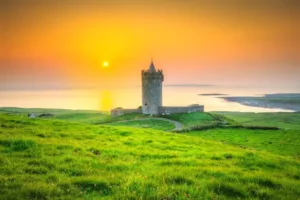
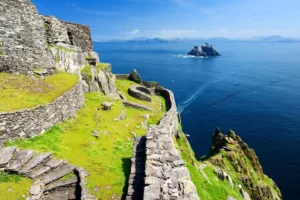
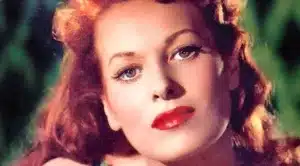
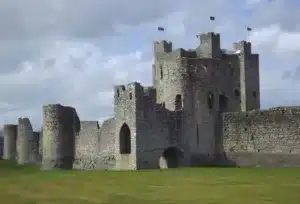
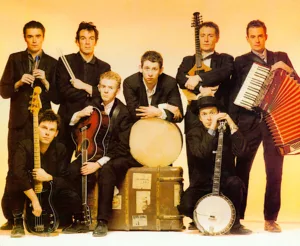
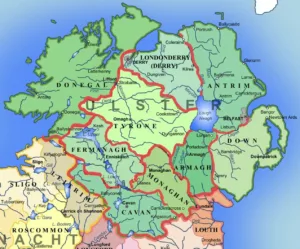
Only Plus Members can comment - Join Now
If you already have an account sign in here.